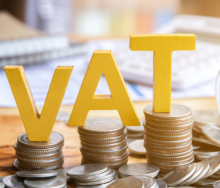Kate Nathan and Kathleen Jennings
Airfares, both international and domestic, have increased considerably in the past year and, unless conditions improve dramatically, they are unlikely to fall any time soon.
While high fares aren’t news to the industry, it’s interesting to observe how many negative factors are in play at the same time to bring aviation to a ‘perfect storm’ and keep it there.
Factors contributing to the perfect storm are staff shortages, supply chain disruption in the aircraft and equipment markets, adverse weather events connected to climate change, political upheaval in Eastern Europe (and now in Africa, with the overflight ban in Niger), industrial action, and rampant global inflation.
One of the major problems that airlines have faced has been that of rebuilding their staff contingent (including cockpit crew) after they were forced to dramatically downsize at the onset of COVID-19. Staff shortages in airlines and in their supply chain (baggage handling, ground services, maintenance companies, new equipment manufacturers) have probably been responsible for a large part of the steady increase in flight prices post-COVID.
Sure Travel Business Manager, Rachael Penaluna, says employee demands for higher salaries have impacted the cost of international airline tickets. “Employee costs have risen, airlines, ground-handlers and airports have had to re-employ post-pandemic and workers are demanding higher salaries.” Like all workers, these want more pay due to post-pandemic inflation.
Airlines are struggling to find enough pilots. The number of commercial pilots has been on the decline in the past 15 years, and Iata warned of pilot shortages as far back as 2016. The problem was exacerbated by the pandemic as many pilots were suddenly in a position where early retirement seemed the best choice and they took it.
But now another factor is adding to the pressure on airlines – an increasing number of pilots are reaching mandatory retirement age, leaving behind a skills vacuum. Some airlines have found themselves unable to meet the increased demand for flights because they are unable to hire enough pilots.
Driven by the Russian invasion of Ukraine, the price of jet fuel skyrocketed in 2022, reaching a record-high of US$172 per barrel in June. However, prices have remained high since China lifted its COVID-19 travel ban in January 2023, the resulting increase in demand supporting high oil prices.
While Iata says the cost of jet fuel will decrease throughout 2023 overall, it has warned that this will not necessarily result in a reduction in airfares. This is due to the need for airlines to move to more sustainable fuel sources.
Iata DG, Willie Walsh, says a move to greener fuel options is bound to lead to higher fare prices in the next 10-15 years. This is due to the higher cost of sustainable aviation fuel compared with the price of the jet kerosene that aircraft currently use.
A recent Iata report notes that passenger traffic is currently at 90% of 2019 levels. “The pandemic years are behind us, and borders are open as normal. Despite economic uncertainties, people are flying to reconnect, explore, and do business,” says Walsh.
Penaluna is seeing that trend among her clients. She says pent-up demand is still pushing people to travel more, despite the high airfares, but it is not certain how long passengers will prioritise international travel at even the current prices.
“Inflation is also affecting ticket costs and does not look like easing up any time soon,” says Penaluna. The cost of living has increased globally, forcing people to spend more on day-to-day living expenses and leaving less money for holidays, especially international ones.
At the same time, it’s as well to remember that these conditions are not all negative for all players. Airlines have profited handsomely and recovered from the pandemic much faster than they themselves predicted.
Emirates reported an annual profit for the 2022-2023 year of US$3bn (R55,8bn), Singapore Airlines US$1,61bn (R30bn), Qatar Airways US$1,21bn (R30bn). Lufthansa forecasts a profit in 2023 of $2,8bn (R52,2bn), Air France KLM Group a profit of US$2,1bn (R39,1bn) and the US carriers are all understandably bullish in their 2023 profit predictions.














